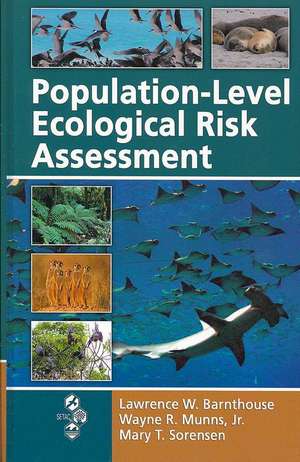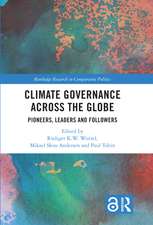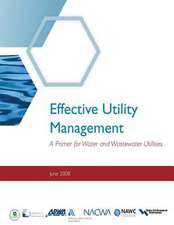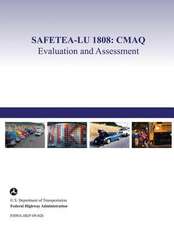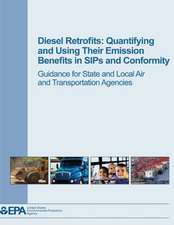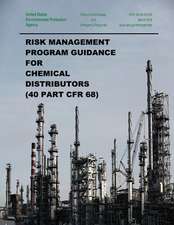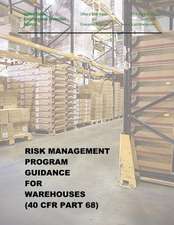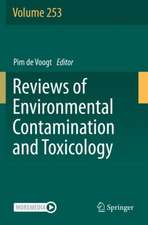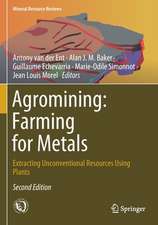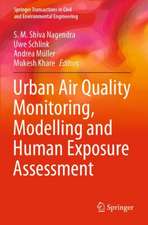Population-Level Ecological Risk Assessment
Autor Lawrence W. Barnthouse, Jr. Munns, Mary T. Sorensenen Limba Engleză Hardback – 25 sep 2007
Population-Level Ecological Risk Assessment establishes a framework for goals, methods, and data needs for different assessment applications and for integrating population-level risk assessment into risk management decisions. Beginning with a summary of legal, regulatory, business, and other contexts, the book presents population-level ecological risk assessment as an internationally recognized, science-based tool and offers specific recommendations for using this tool to support environmental management decisions. It gives clear, explicit, operational population assessment definitions and explains the relevance of density dependence, genetics, and spatial considerations, as well as applicable lessons from conservation biology and natural resource management.
The authors provide a "tool box" of empirical and modeling methods and describe the general approaches, assumptions, data requirements, strengths, and limitations of each method. They establish a working foundation for designing and conducting population-level ecological risk assessments consistent with North American, European, and Japanese risk management approaches. The book concludes by highlighting key considerations needed to improve the scientific quality and interpretation of assessments. Detailed appendices include examples of population-level assessment approaches applicable to specific environmental management contexts, a modeling case study, and a supplemental reading list.
| Toate formatele și edițiile | Preț | Express |
|---|---|---|
| Paperback (1) | 451.75 lei 6-8 săpt. | |
| CRC Press – 2 dec 2019 | 451.75 lei 6-8 săpt. | |
| Hardback (1) | 992.69 lei 6-8 săpt. | |
| CRC Press – 25 sep 2007 | 992.69 lei 6-8 săpt. |
Preț: 992.69 lei
Preț vechi: 1333.14 lei
-26% Nou
Puncte Express: 1489
Preț estimativ în valută:
190.04€ • 197.54$ • 157.56£
190.04€ • 197.54$ • 157.56£
Carte tipărită la comandă
Livrare economică 06-20 februarie 25
Preluare comenzi: 021 569.72.76
Specificații
ISBN-13: 9781420053326
ISBN-10: 1420053329
Pagini: 376
Ilustrații: 37 b/w images, 16 tables and 5 halftones
Dimensiuni: 156 x 234 x 24 mm
Greutate: 0.86 kg
Ediția:New.
Editura: CRC Press
Colecția CRC Press
Locul publicării:Boca Raton, United States
ISBN-10: 1420053329
Pagini: 376
Ilustrații: 37 b/w images, 16 tables and 5 halftones
Dimensiuni: 156 x 234 x 24 mm
Greutate: 0.86 kg
Ediția:New.
Editura: CRC Press
Colecția CRC Press
Locul publicării:Boca Raton, United States
Public țintă
Academic, Professional, and Professional Practice & DevelopmentCuprins
Introduction, THE MANAGEMENT-SCIENCE INTERFACE, SCIENTIFIC ISSUES IN POPULATION-LEVEL ECOLOGIC RISK ASSESSMENT, APPROACHES TO POPULATION-LEVEL ECOLOGIC RISK ASSESSMENT, A PATH FORWARD, REFERENCES AND APPENDICES
Recenzii
Practitioners of ecological risk assessment owe it to themselves to read this book.
–Glenn Suter, SETAC Reviews Editor, in Integrated Environmental Assessment and Management, Vol. 4, No. 2
–Glenn Suter, SETAC Reviews Editor, in Integrated Environmental Assessment and Management, Vol. 4, No. 2
Notă biografică
Barnthouse\, Lawrence W.; Munns\, Jr.\, Wayne R.; Sorensen\, Mary T.
Descriere
A tool box of empirical and modeling methods, this book provides a foundation for designing and conducting population-level ecological risk assessments consistent with North American, European, and Japanese risk management approaches. It establishes a framework for goals, methods, and data needs for different assessment applications and for integrating population-level risk assessment into risk management decisions. The book highlights key considerations needed to improve the scientific quality and interpretation of assessments. It includes examples of population-level assessment approaches applicable to specific environmental management contexts and a modeling case study.
